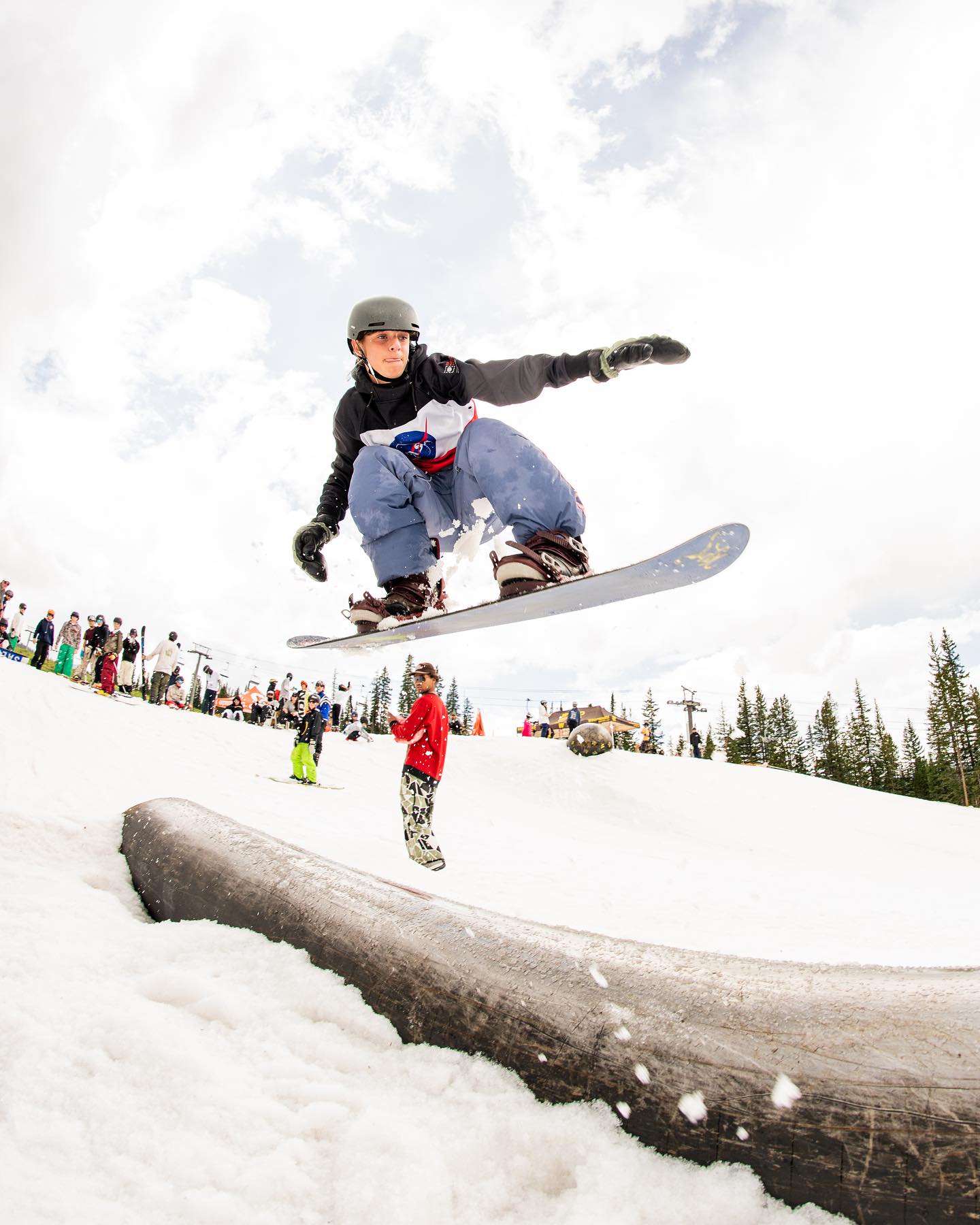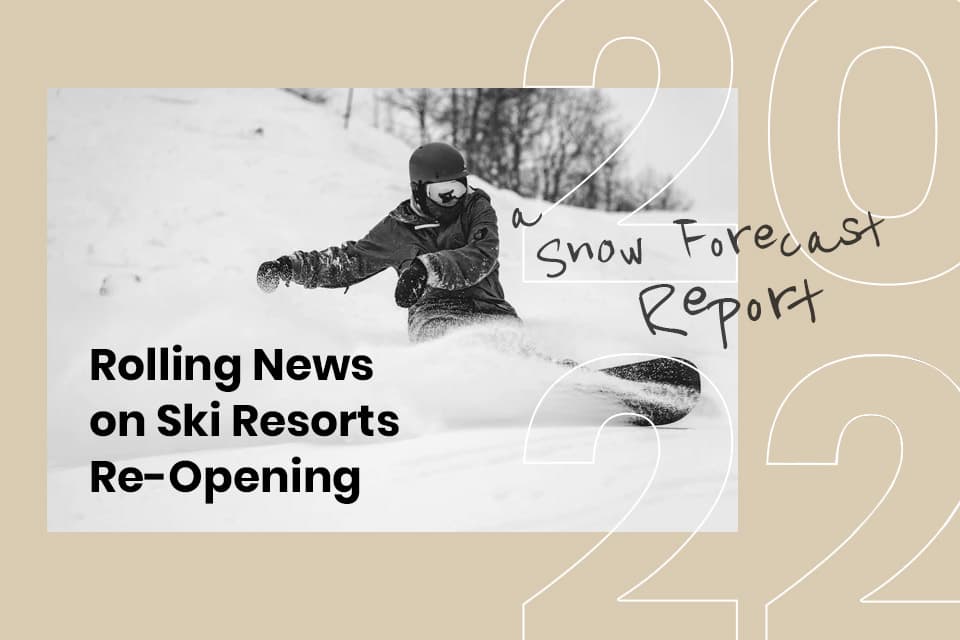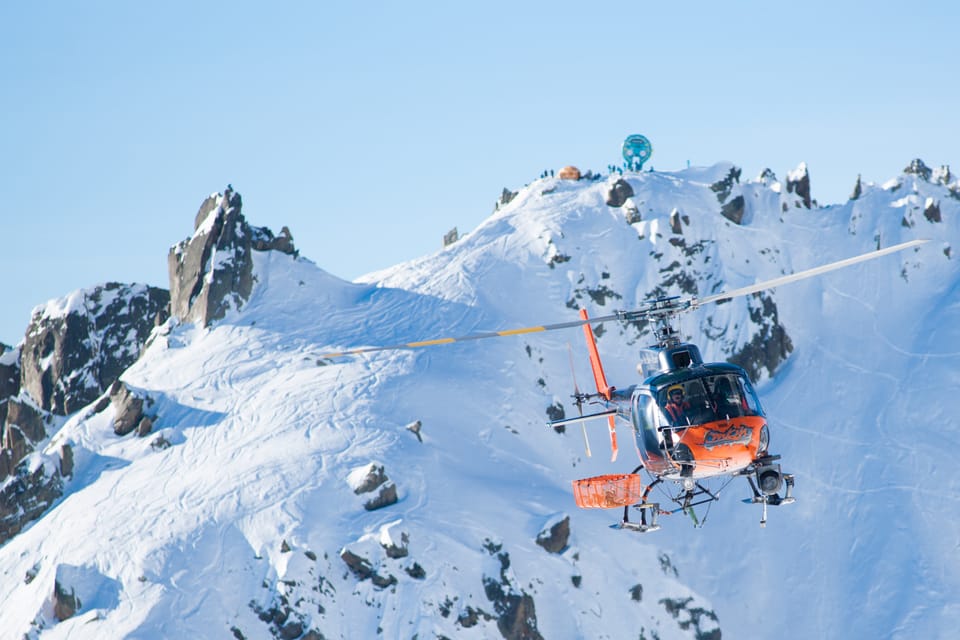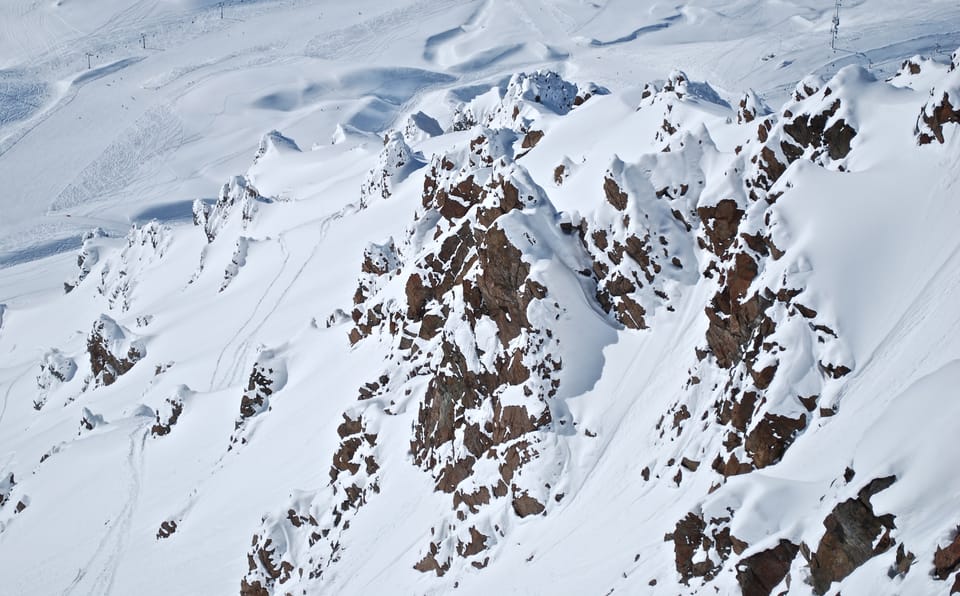WORLD SNOW ROUNDUP #302

Issued: 9th August 2023
By Patrick “Snowhunter” Thorne
World Overview
Another week without any huge snowfalls to report anywhere, but with trends continuing across the skiing world. In Australia, for example, it continues to be warmer and drier than we might like, causing major problems for a few now snowless centres. Although most are still largely open thanks to snow accumulation from the start of the season plus overnight lows allowing snow-making. In New Zealand, it is the reverse with cold and snowy weather in recent weeks allowing for a fast catch-up after a poor start to the season, meaning most centres are now open and with most slopes open too. The country is also posting the two deepest snow depths in the southern hemisphere. For the Andes, it’s little change with the weather drier than most would like and bases below the average but still most centres have 60-90% of their slopes open.
In the northern hemisphere, the big event of the last seven days was Mammoth Mountain finally ending its 22-23 season on Sunday after 9 months or 275 days and with less than 100 days to go to the planned start of its 23-24 season. Half a dozen other US and European resorts remain open though, and in the Alps, but there continues to be a more changeable weather pattern in place than the June and July heat, with the start of an autumnal feel perhaps. Snow was reported on high slopes across the Alps to start this week. In terms of future news, Cervinia has announced plans to offer access to ski slopes 365 days a year from October on. But Tignes (in France), by contrast, has announced it will no longer open for autumn skiing and not attempt to open until the end of November.
Southern Hemisphere
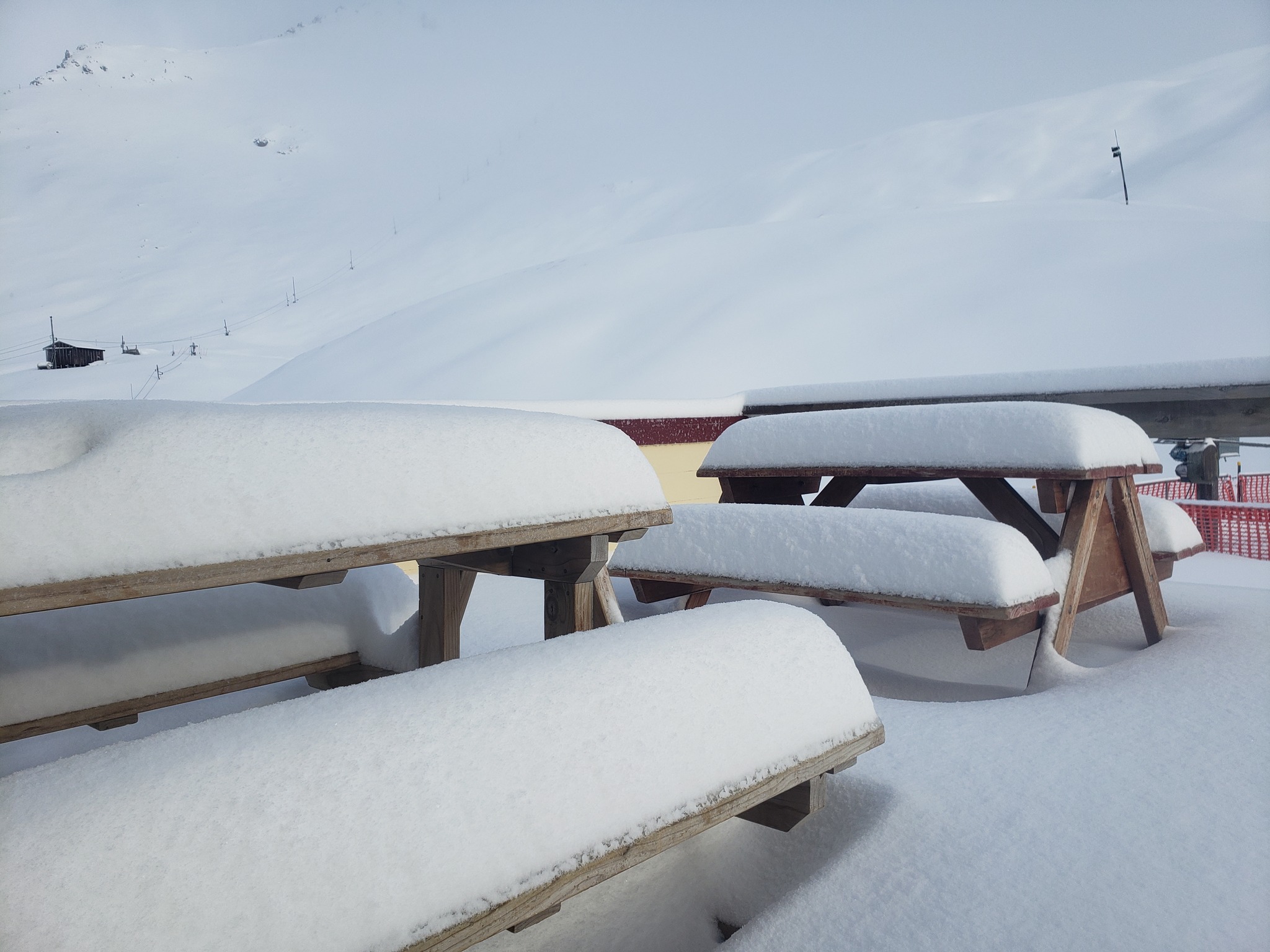
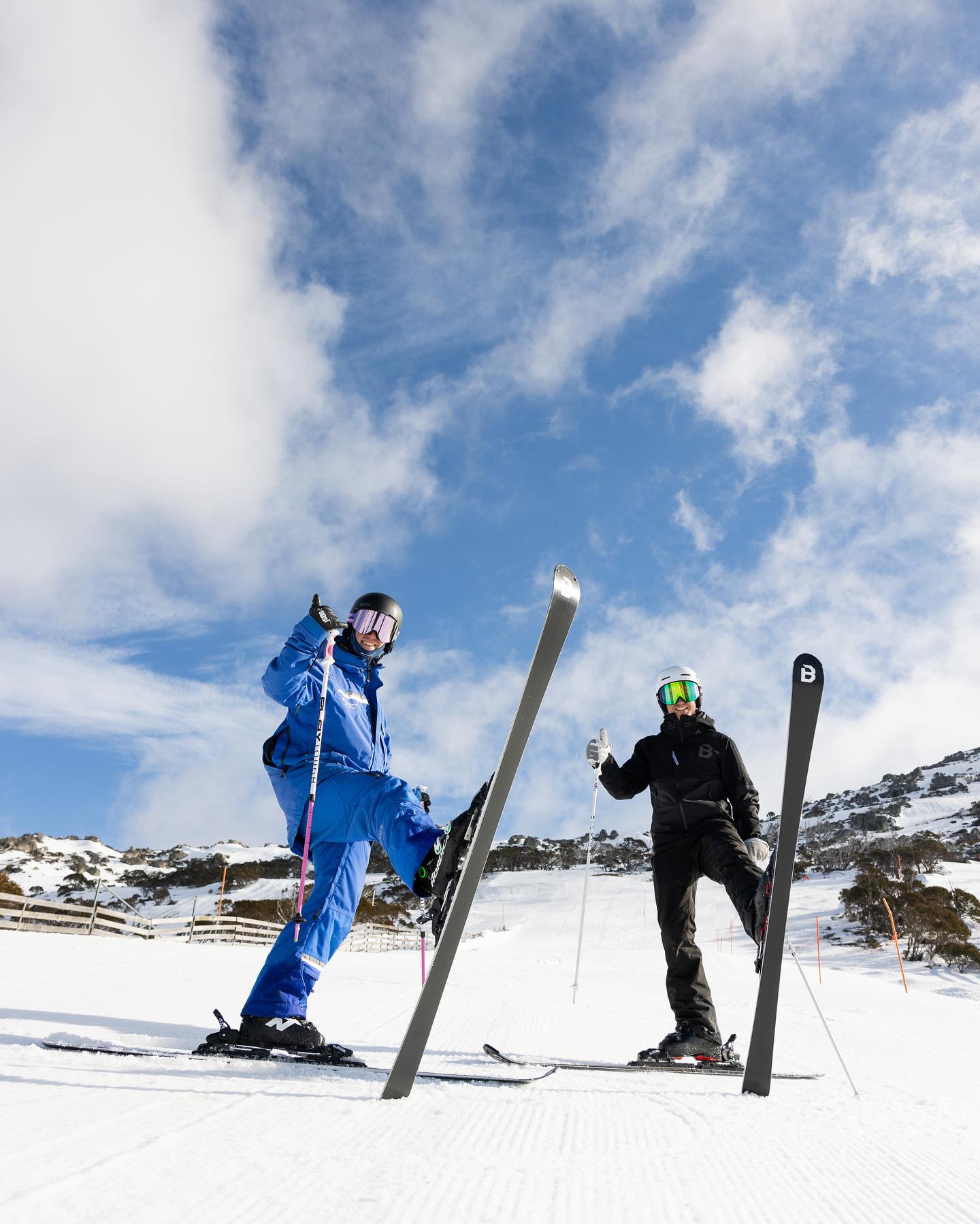
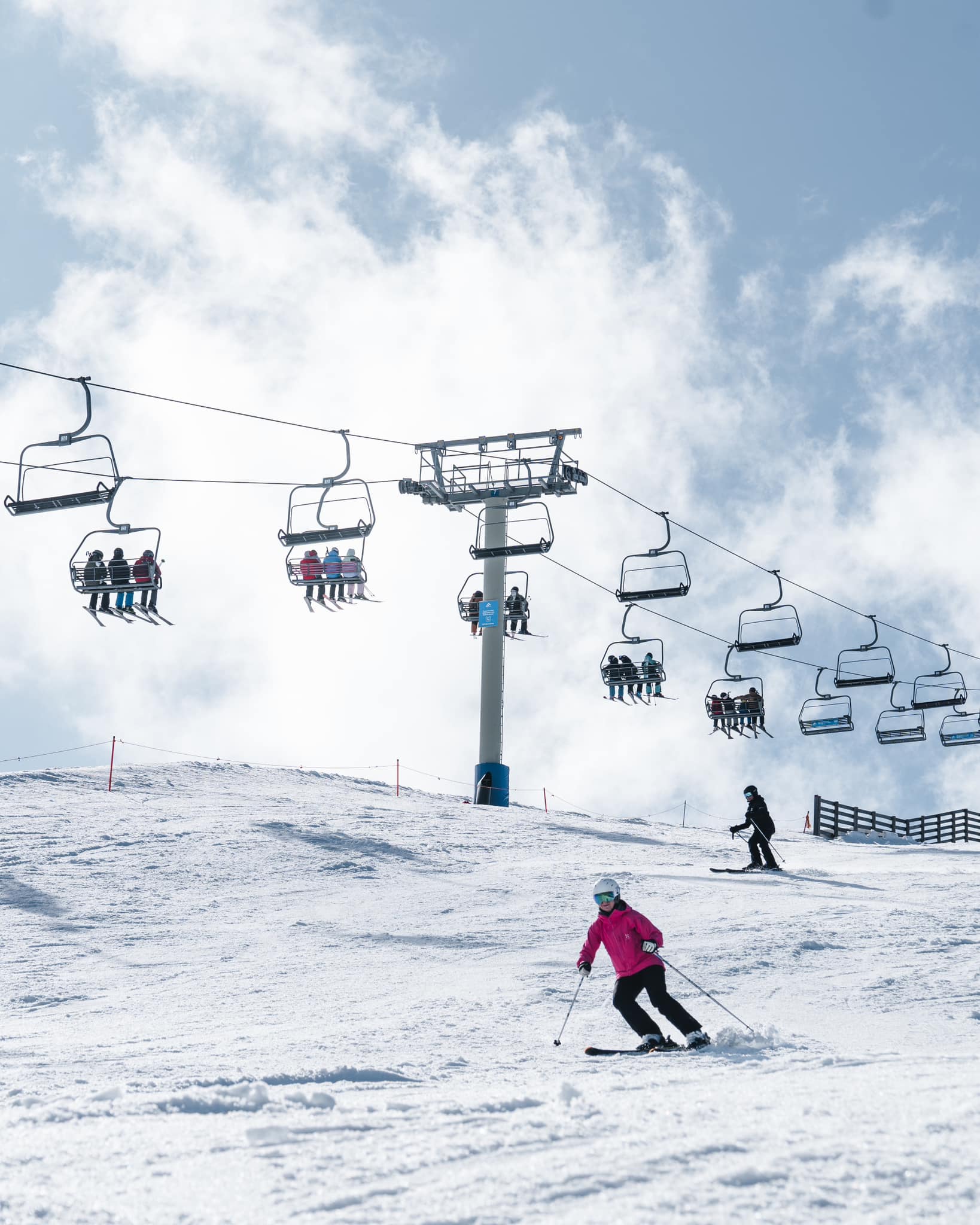
AUSTRALIA REPORT
Another predominantly sunny week in Australia with most of the country’s larger resorts still in fairly good shape. But several suffering now from lack of snow and reports suggest that much of the country saw July temperatures of 1.5 to 2 degrees above average. It does keep dropping below freezing, however, so although there’s not been much natural snowfall for a month now, most areas can replace lost daytime snow through thawing, to some extent, with overnight snow-making. Perisher (60/131cm / 24/52″) continues to post the most terrain open in the country, more than 48km/30 miles, and the deepest lying snow, with no real change in the numbers in the last week. Falls Creek (50/70cm / 20/28″) has dropped from 100% of its terrain open though, a position it held for much of the last month, to only about 60% now. Thredbo (40/75cm / 16/30”) and Mt Buller (5/32cm / 2/13”) have about half of their runs open with Buller’s snow depth stats obviously looking worrying.
AUSTRALIA FORECAST
Not much change and not much respite on the horizon although the end of the week should see a temporary temperature dip and the chance of some fresh snowfall. Otherwise, a continuing mostly sunny forecast with overnight lows around -5C, daytime highs getting up to +10C.
NEW ZEALAND REPORT
The stormy weather that was getting started in New Zealand at our last report a week ago continued through last week with gale force winds and blizzard conditions continuing to cause issues and temporary closures. But the freezing temperatures and fresh snowfall were welcomed and bases continue to build. Going into last weekend Tūroa (90/230cm / 36/92”), on Mt Ruapehu on the North Island, reported 30-40 centimetres (12-16”) of new snow up high and 20 centimetres (8”) at their base allowing their team to get the High Noon Express open. Tūroa is also posting the deepest snowpack in the southern hemisphere and the second deepest in the world at present. At neighbouring Whakapapa (65/90cm / 26/36”) they were able to get the West Ridge Chair ready to spin, opening more terrain with fresh snow. Another piece of good news was that the Manganui Ski Area run by the Stratford Mountain Club, which had been the first in the southern hemisphere to open in mid-May but then didn’t get enough snow to open since, finally did manage to do so. Although just for a few days before closing again at the weekend. But, overall, the picture remains pretty much the best it has been all season. After Tūroa, Mt. Hutt (85/170 cm / 34/68”) is posting the second deepest base in the country/southern hemisphere (4th in the world) and (unlike Tūroa) has 90% of its terrain open, again about the best stat in the world at present. Most other Kiwi centres are in fairly good shape now with deepening bases and more terrain open.
NEW ZEALAND FORECAST
After a week of mostly cold temperatures, mostly below freezing, and some light snow showers, sometimes accompanied by gales, the end of the week is currently looking more consistently sunny in most areas from Wednesday on. Temperatures remain very bracing though, with lows at double digits below freezing and daytime highs still subzero Celsius some days.
ARGENTINA REPORT
The lack of fresh snowfall and rather mild daytime temperatures of the last week have led to base stats dropping, but Catedral (10/60cm / 4/24″) continues to post the most terrain open of any area in the world by some distance, with around 90km (over 45 miles) of slopes open, about double its nearest competitor, Perisher in Australia. Snow depths remain lacklustre with the deepest reported in South America mostly to the west in Chile (although not much deeper). Argentina’s and the world’s most southerly resort, Cerro Castor (60/70cm / 24/28″) is posting the deepest snow though the southern part of Argentina saw much colder weather and snowfall than further north.
ARGENTINA FORECAST
After some warm and sunny weather to start the week we are due to see a big drop in temperatures and potentially 50-60cm (20-24″) of snowfall through the later half of this week, all being well. If it arrives as models predicted this could be the big mid-season boost ski areas need.
CHILE REPORT
There’s not very much fresh snowfall to report for Chile this week but Portillo (54/114 cm / 22/46″) is still reporting the deepest snow in South America and is the only resort reporting more than a metre lying on its upper slopes. Not so much the famed powder at present though (although it can still be found), but more hard-packed. So it has been more glorious groomers under sunny skies for most Andean ski areas this last week. El Colorado and Farellones (10/50 cm / 4/20”) continue to post the most terrain open in Chile, around 40km (25 miles) of slopes, a little ahead of Valle Nevado (20/70 cm / 8/28”), which has about 75% of its 40 km of slopes open.
CHILE FORECAST
It has been dry and fairly cool with a mixture of cloudy and sunny skies over the last week and there’s not a great change in the forecast for the next few days, other than the hope of some snowfall, perhaps 5-10cm (2-4″) for some Chilean resorts over the next few days, but nothing really big expected. Temperatures are not expected to get above +5C in the daytime but could drop as low as -10C overnight.
SOUTHERN AFRICA REPORT
There continue to be some of the best snow conditions of the year around Tiffindell, in South Africa, where everything is looking white from cam images even without snow-making working. But, alas, the resort appears closed for good at present. Lesotho’s Afriski has been promoting an ‘end of winter’ festival next week, which appears to feature skiing and snowboarding after not offering any all season. But it’s not clear if that actually is the case or just images from previous years.
SOUTHERN AFRICA FORECAST
Continuing mostly sunny for the week ahead, overnight lows potentially down to -5C, daytime highs up to +9C.
Europe
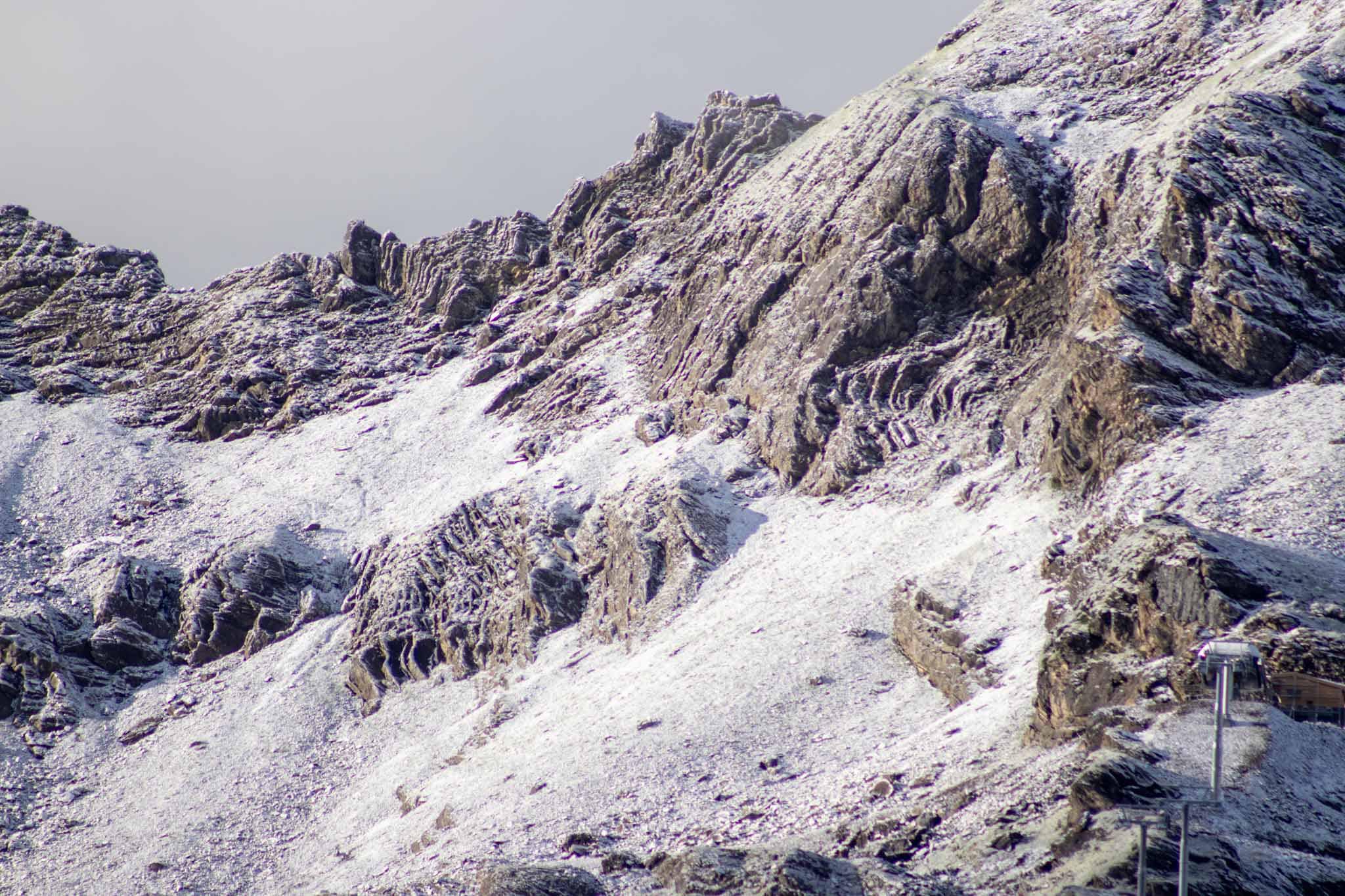
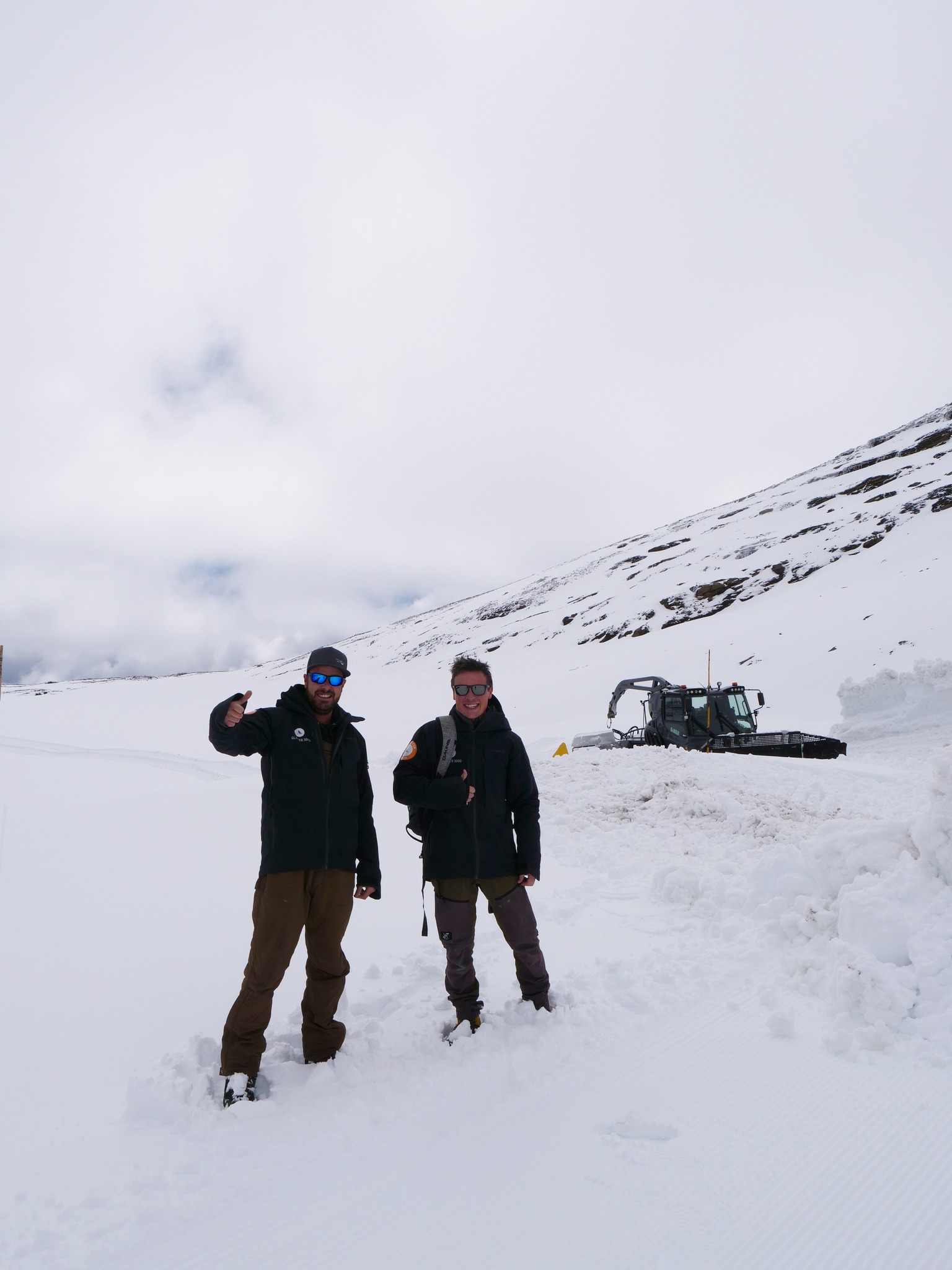
EUROPE INTRO
It’s been more of a mixed week for weather in the Alps with some gale-force winds and periods of rain, sleet and snow causing operational issues at times. Monday morning saw snowfall reported on high slopes in Austria, France, Germany and Switzerland. The Zugspitze glacier reported a 10cm (4”) accumulation, Glacier 3000, 30cm (a foot). Further north in Scandinavia it’s been mixed too but with more consistently cold temperatures and ever-stronger signs of autumn on the way. There remain four glacier centres open in Austria. Switzerland and Italy, one in Norway although a further centre here is opening for private training sessions for race teams. Two bits of news for the future of spring-autumn skiing have emerged this week. On the upside, Cervinia has announced it will provide access to ski slopes for 365 days a year from this autumn on, but in less good news Tignes says it will no longer aim to open in early autumn meaning that once having had 10 summer ski areas and year-round skiing, France looks set to have no ski slopes open for over four months between early July and late November from this year on.
AUSTRIA REPORT
Hintertux (0/45cm / 0/18”) remains the only ski area open in Austria and its base has dropped to quite a thin level now, but there is snow-making and there have been some snow showers reported on the glacier. The centre reports 12km (7 miles) of high-altitude slopes still open. Of course, September normally sees more Austrian areas opening their glaciers for early autumn skiing. Some won’t now open until early October but among those expected to open next month for their 23-24 seasons are Pitztal, Kaunertal, Kitzsteinhorn and probably Sölden.
AUSTRIA FORECAST
Temperatures on glaciers have been yo-yoing between around -9C and +5C so freeze-thaw conditions. Along with the unsettled weather there have been a succession of fronts bringing sun, cloud, snow, rain, gales and hill fog at various times. This is set to continue.
SWITZERLAND REPORT
Switzerland continues to have more centres open than any other, although that’s still not that many. Two to be precise, Saas Fee (0/250c,m / 0/100”) and Zermatt (0/200cm / 0/80″). Although they have the highest glacier slopes in Europe and despite building bases at some southern hemisphere ski areas, they still have some of the best bases in the world at present. Each has 12-14km (7-8 miles) of slopes open too. The last week has seen a mixture of sun, snow, sleet and rain with some strong winds and low clouds thrown in too, closing lifts at times particularly at Zermatt.
SWITZERLAND FORECAST
A rather more settled period of weather is expected for the next few days, with overnight lows on glaciers getting as low as -10C with afternoon highs back up to +5C. So full freeze-thaw.
FRANCE REPORT
There’s been more mixed weather conditions in the French Alps with periods of rain, sleet and even high-altitude snow thrown in alongside the usual sunshine. There remains nowhere open for summer skiing and it now seems that there’ll be nowhere open in the country for another three-and-a-half months with Tignes announcing that it has given up on its planned September and October openings and won’t now open until the end of November, in line with other high-altitude French ski areas.
FRANCE FORECAST
More settled conditions for the next few days with temperatures getting down around -5C on glaciers overnight but daytime highs of +5C likely.
ITALY REPORT
Summer skiing continues at Passo dello Stelvio (the Stelvio Pass)(0/65cm / 0/24”) and although temperatures are still warm and only about half the terrain is open in the mornings, reporting “wet snow” from the get-go, recent cooler temperatures and even some light snow flurries at the end of last week when temperatures dipped to as low as -10C with highs of zero Celsius, have improved things a little. Italy’s Cervinia (0/200cm / 0/80″) also remains open, providing access to the Zermatt Matterhorn Glacier Paradise ski area. This week it has announced it will start offering year-round access to the glacier, as Zermatt does, weather permitting, when it re-opens after its late summer/early autumn/fall break in early October, thanks to the new 3S gondola connection from Plateau Rosa up to the Klein Matterhorn. Weather displaying low visibility and gales, did close the slopes at the weekend.
ITALY FORECAST
It has been mostly sunny since the latter half of the weekend and that looks set to continue through the coming week with temperatures climbing to +10C in the daytime although still expected to drop below freezing overnight.
SCANDINAVIA REPORT
Galdhøpiggen (0/150 cm / 0/60”), the region’s highest ski area, remains the only centre currently open in Scandinavia, with about a mile of slopes open and popular with race teams for training. The weather has been rather grim with rain, sleet and snow showers and temperatures in the -3 to +3 Celcius range. The Fonna summer glacier area is also still operating, it reported, but only for summer race team training. Colder than usual for July and August which is good news for snow preservation and occasional overnight fresh cover too. It’s now also just two months until the first Finnish ski centres, Levi and Ruka, plan to open for their 7-month 23-24 ski seasons, thanks to snow farming, by using last year’s stockpiled snow spread back out on the slopes.
SCANDINAVIA FORECAST
It is looking a little more settled and a little warmer for the remainder of this week with even a chance of some sunshine over the next few days and daily highs creeping up past +5C.
USA REPORT
Mammoth Mountain finally ended its 22-23 season after 275 days (that’s over nine months) on Sunday, making it into August for the first time since 2017 and only the third time in its 69-season history. But the talk is already of winter 23-24, only three months away, with Mammoth naming November 10th as its target opening date. Mammoth’s closure means that only one ski area remains open in North America, the ski area that often is open in August, the Palmer snowfield on Mt Hood above Timberline resort (0/38” / 0/95cm) in Oregon. The heat has kept up here, although there has been some cloudy weather at last and there are just a couple of miles of slopes still open in the mornings with a continually thinning base and terrain park closed. Elsewhere, the unlikely location of Ski Ward, a small ski area in Massachusetts on the East Coast, has been making snow news this week, running a new all-weather snow-making system to produce snow in warm weather, for some snow fun. Copper Mountain, in Colorado, has also continued to operate its terrain park for campers at their Woodward facility, based on snow that’s still lyng from last winter.
USA FORECAST
Sunny weather is set to return for the latter half of this week with temperatures expected to climb up to the 70s Fahrenheit in the daytime, dropping down to the 40s overnight.
